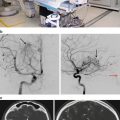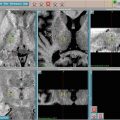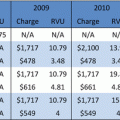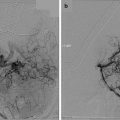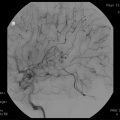(1)
Department of Neurology, Barrow Neurological Institute, St. Joseph’s Hospital and Medical Center, Phoenix, AZ, USA
(2)
Department of Neurology, Banner Sunreach Research Institute, Sun City, AZ, USA
Movement Disorders: Viewpoint—Medical Therapy
Movement disorders are a diverse group of diseases that constitute either an excess of movement or a paucity of movement. The former are known as hyperkinetic and the latter as hypokinetic disorders. Parkinson disease (PD), next to essential tremor (ET), is the most common movement disorder, and unlike ET is more debilitating. PD encompasses both hypokinesia (slowness and paucity of movement) and hyperkinesia (tremor). In addition many PD patients on levodopa treatment develop dyskinesias, a hyperkinetic movement disorder, a combination of chorea (dance-like involuntary movements) and dystonia (altered tone).
Parkinson disease shares many features with a number of Parkinson-plus or Parkinson-like disorders. These disorders usually do not respond to treatment with levodopa, usually run more rapid courses, and rarely have hyperkinetic features. These disorders have pathology different from PD; they include multiple system atrophy (MSA), progressive supranuclear palsy (PSP), and corticobasilar degeneration (CBD).
Essential tremor (ET) is the most common movement disorder. Although troublesome, it is usually not debilitating. Among the more prominent hyperkinetic movement disorders are Huntington disease and Tourette’s syndrome. Hyperkinetic disorders include movements such as athetosis, ballism, chorea, myoclonus, tics, and tremor. These can occur as isolated phenomena or as the results of strokes or in association with liver, kidney, endocrine, or metabolic disorders. They can also occur as the result of drugs including amiodarone (tremor), lithium (tremor), metoclopramide (dystonia, parkinsonism), neuroleptics (dystonia, parkinsonism), and valproate (tremor). The term tardive dyskinesia is used to describe drug-induced movement disorders. Tardive can signify a delay in the appearance of the movement disorder after the drug has begun, or delay in the appearance of the movement disorder after the drug has been discontinued. The focus of this chapter will be on the two most common disorders: PD and ET.
Parkinson Disease
PD is a disorder characterized by four cardinal features that include tremor at rest, bradykinesia (a slowness and paucity of movement), rigidity, and postural instability. Other features that at times can be as troubling as the cardinal features include mental changes ranging from minimal cognitive impairment to dementia, depression, apathy, difficulty walking, freezing of gait, and autonomic insufficiency. Additional features may include a postural kinetic tremor, speech and swallowing difficulties, sialorrhea, and abnormal flexed postures of the hands, the legs, and the trunk. Although tremor is strongly associated with PD, 30 % of PD patients have no tremor.
The disorder was first described in 1817 by James Parkinson who wrote An Essay on the Shaking Palsy [1]. PD usually begins asymmetrically with slowness of movement of an arm or leg and/or a rest tremor (of the hand). PD is a rarity among movement disorders in that it usually appears asymmetrically. Corticobasilar degeneration (CBD), a disorder that occurs 1/100th as often as PD, also presents asymmetrically. In PD, over several years the disorder progresses to involve the contralateral side and trunk [2]. If a disorder diagnosed as PD presents with symmetrical signs and progresses rapidly, the evolving disorder which may have initially been diagnosed as PD will likely turn out to be one of PD-plus disorders. This is especially so if postural instability with falls appears early in the evolution of the disorder [3].
Several studies have identified non-motor features of PD, features that may precede the diagnosis of PD [4]. These include loss of olfaction, a rapid eye movement (REM) sleep behavior disorder (RBD), constipation, autonomic insufficiency, apathy, depression, and mild cognitive impairment [5]. Loss of olfaction may be one of the first signs of PD, appreciated in retrospect. Loss of olfaction is not improved or worsened by anti-PD drugs [6]. Although the cause of PD is unknown, it has been speculated, by some, a prion, utilizes the olfactory pathway to enter the brain and cause PD. While RBD is not a specific marker for PD, it is present in a higher frequency in people who develop PD. The locus ceruleus, a noradrenergic nucleus in the brainstem, a nucleus affected in PD, may also be affected in RBD. The progression of PD from caudal sites such as the dorsal vagal nucleus in the medulla to the locus ceruleus to the substantia nigra suggests to some, a causative process that progresses in a caudal rostral direction [7].
The pathology in PD is characterized by progressive degeneration of the dopaminergic nigrostriatal system and also by degeneration of other neuronal systems including involvement of acetylcholine neurons in the nucleus basalis of Meynert, serotonin neurons in the dorsal raphe nucleus, and noradrenalin neurons in the locus ceruleus as well as neurons in the cortex, the spinal cord, and the central and peripheral autonomic nervous system [8]. Recent studies utilizing positron emission tomography (PET scans) and single photon emission tomography (SPECT scans) suggest that despite the presence of PD for many years, degeneration of the dopamine neurons and the loss of dopamine in the putamen and caudate nucleus are incomplete [9].
The loss of dopamine neurons in the nigra and the loss of dopamine in the putamen may account for the hypokinetic component of PD. These symptoms are helped by levodopa (which replaces the depleted dopamine). An impairment of circuits including tracts from the motor cortex to the putamen then to the globus pallidus, then to the subthalamic nucleus, then to the thalamus, and back to the supplementary motor cortex may account for the hyperkinetic components of PD.
The manifestations of PD range from a barely perceptible rest tremor to significant dysfunction resulting in freezing of gait with falls, loss of postural stability, falls, and cognitive decline progressing to dementia. Most of the motor manifestations of PD are related to the deficiency of dopamine in the striatum. A major advantage in identifying a prodromal PD state would be the opportunity to introduce therapy at an earlier time point than is currently possible with, perhaps, a delay in the progression of some symptoms.
Therapy in early PD is guided by the effect of symptoms on function and quality of life, consideration of complications associated with the long-term use of drugs, particularly levodopa and the likelihood of the development of response fluctuations such as “wearing off” (gradual loss of efficacy of a dose of levodopa), “on off” (abrupt loss of efficacy of a dose of levodopa), and dyskinesias. Several studies suggest that early treatment may provide benefits that may not be achieved if the drugs are introduced later [10].
Monoamine oxidase (MAO) type B inhibitors, such as Rasagiline or Selegiline, are effective as monotherapy in patients with early PD and as adjunctive therapy to dopamine agonists or levodopa in patients with more advanced PD [11]. Monoamine oxidase B inhibitors, unlike MAO-A inhibitors (drugs used in psychiatry), do not result in elevations of tyramine, an amine found in certain cured meats, red wines, and cheese. Unlike with MAO-A inhibitors, dietary restrictions are not necessary with MAO-B inhibitors provided the recommended doses are used. There is a question as to whether Rasagiline, through mechanisms unrelated to monoamine oxidase B inhibition, may slow the progression of PD [11]. Approximately 50 % of patients improve mildly or moderately. Improvement continues throughout the illness.
Other drugs used in PD, drugs that can be used as initial treatment, include amantadine and the dopamine agonists. Amantadine, originally introduced as a drug to prevent the flu, both enhances dopaminergic transmission, resulting in an anti-PD effect, and blocks NMDA glutamate receptor. The anti-glutaminergic affect may account for the ability of amantadine to lessen the dyskinesias that often complicate long-term levodopa treatment [12]. Dopamine agonists, drugs that mimic the effects of dopamine in the brain, may be used as initial treatment and as adjuncts to levodopa. Dopamine agonists, including Ropinirole, Pramipexole, and Rotigotine (administered as a skin patch), are longer acting than levodopa. In early PD they have an anti-PD less than levodopa but they do not result in “wearing off” or “on off” and they do not result in dyskinesias. Used in combination with levodopa they may allow for a reduction in the dose of levodopa, a lessening of the “wearing off” and “on off effect” and a decrease in dyskinesias [13]. Approximately 50–75 % of patients with early PD improve. Improvement maintained throughout most of the course of the disease. Adverse effects associated with the dopamine agonists include hallucinations (which also occur with levodopa), peripheral edema, hyper-somnolence, and impulse control disorders including pathologic gambling, hypersexuality, and hyperphagia. Although impulse control disorders also occur with levodopa, they are more prominent with the dopamine agonists.
Stay updated, free articles. Join our Telegram channel

Full access? Get Clinical Tree


